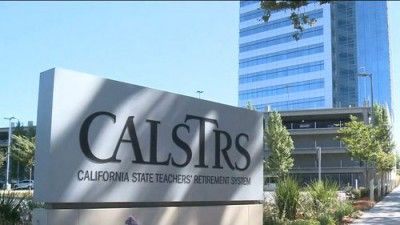CalSTRS at risk of disaster despite 2014 bailout

Four years after the state Legislature passed a bailout of the California State Teachers’ Retirement System that will nearly double annual direct contributions to the giant pension fund, a newly released internal report raises the prospect that the infusion of extra dollars may not protect CalSTRS from future disaster.
The 2014 changes in funding required districts to more than double their CalSTRS contributions, phasing in an increase from 8.25 percent of teacher pay in 2013-14 to 19.1 percent in 2020-21. Individual teachers and the state government also were required to pay more. But about 70 percent of the new funding – which will push total annual contributions from nearly $6 billion in 2013-14 to $11 billion in 2021 – is coming from districts.
The assumption in 2014 was that this extra funding was so significant that CalSTRS’ long-term viability was assured. The nonpartisan Legislative Analyst’s Office billed the hikes as a “major state accomplishment.”
On Nov. 8, however, the CalSTRS board was presented with a “risk report” that included both upbeat and gloomy scenarios. As Ed Mendel reported on the Calpensions website, the report found that if investment returns met their 7 percent target, CalSTRS’ retirement liabilities would be 100 percent funded by 2046 – a vast improvement on the present 70 percent.
50% chance fund hits point of no return threshold
But whether a 7 percent projected annual return is reasonable isn’t just questioned by pension watchdogs like Stanford professor Joe Nation and former Schwarzenegger policy adviser David Crane. CalSTRS’ number crunchers concluded that “even with the new rate increases, there is still a 50 percent probability that the CalSTRS funding level will drop below 50 percent in the next 30 years, according to 5,000 simulations based on the current asset allocation,” Mendel reported. Going below the 50 percent threshold is considered by many pension experts the point of no return, with little prospect that stricken retirement funds could ever rebound.
The problem for CalSTRS isn’t just consistently hitting or surpassing the 7 percent annual return goal. It’s that as few as one or two bad years of returns have a compound effect on long-term liabilities. The weak performances by CalSTRS and the California Public Employees’ Retirement System when the Great Recession hit more than a decade ago still haunt the funds, which are the two largest government pension agencies in the U.S. CalSTRS went from being 100 percent funded in October 2007 to 60 percent funded in March 2009, according to a Calpensions report.
CalSTRS’ and CalPERS’ grim numbers are a big reason why state Democrats are pushing for major changes in Proposition 13, the state’s landmark 1978 measure capping property tax increases at 2 percent a year. An initiative ending the protection for commercial and industrial properties will be on the 2020 state ballot and has the potential to generate $11 billion in new revenue a year.
School districts growing desperate over budgets
It may be a tough sell in an era in which the state has run surpluses for several years – including a $15.8 billion windfall expected in fiscal 2019-2020. But the “split roll” change sought for Proposition 13 reflects in many ways the deep concerns in the education establishment that the cost of the 2014 CalSTRS bailout is making it increasingly difficult for school districts to craft balanced budgets.
As CalWatchdog reported Oct. 1, one reason that the Legislature adopted new rules on permissible levels of lead in school drinking water that some health experts thought didn’t go nearly far enough was that the California School Boards Association worried that tougher standards would have been far more costly. The new standards for state schools were seen as still leaving students at risk of developing the severe cognitive and behavioral problems associated with children and adolescents being exposed to lead.
As of July, CalSTRS had $224 billion in assets. It would need to have $320 billion in hand to be considered fully funded.
Chris Reed
Chris Reed is a regular contributor to Cal Watchdog. Reed is an editorial writer for U-T San Diego. Before joining the U-T in July 2005, he was the opinion-page columns editor and wrote the featured weekly Unspin column for The Orange County Register. Reed was on the national board of the Association of Opinion Page Editors from 2003-2005. From 2000 to 2005, Reed made more than 100 appearances as a featured news analyst on Los Angeles-area National Public Radio affiliate KPCC-FM. From 1990 to 1998, Reed was an editor, metro columnist and film critic at the Inland Valley Daily Bulletin in Ontario. Reed has a political science degree from the University of Hawaii (Hilo campus), where he edited the student newspaper, the Vulcan News, his senior year. He is on Twitter: @chrisreed99.
Related Articles
CA and Obamacare: Media offer happy talk, not analysis
May 31, 2013 By Chris Reed Last week, when the California agency that has the lead role in implementing Obamacare
GOP congressman shows how to win Latino votes
March 12, 2013 By John Seiler With California Republicans soul-searching about how to get more Latinos to vote for them,
CalWatchdog Morning Read – September 16
City College of SF ballot measure shows financial woes not gone yet State proposes more water for fish, less for farms,



